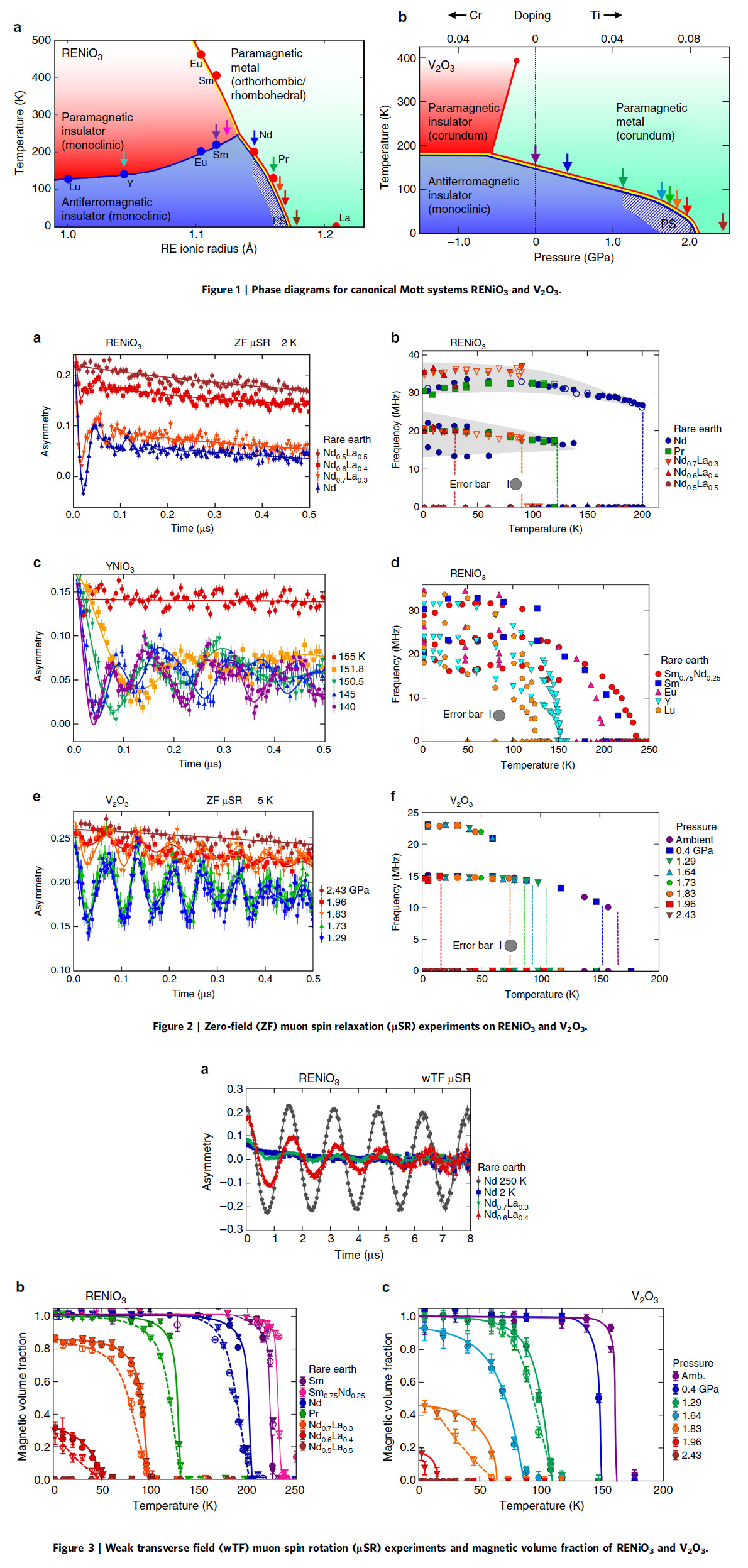量子调控的反铁磁Mott绝缘体相变
(Volume-wise destruction of the antiferromagnetic Mott insulating state through quantum tuning )
B. A. Frandsen, L. Liu, S. C. Cheung, Z. Guguchia, R. Khasanov, E. Morenzoni, T. J.S. Munsie, A. M. Hallas, M. N. Wilson, Y. P. Cai, G. M. Luke, B. J. Chen, W. M. Li, C. Q. Jin, C. Ding, S. L. Guo, F. L. Ning, T. U. Ito, W. Higemoto, S. J.L. Billinge, S. Sakamoto, A. Fujimori, T. Murakami, H. Kageyama, J. A. Alonso, G. Kotliar, M. Imada & Y. J. Uemura
Nature Comm. 7, 12519 (2016)
RENiO3 (RE=are-earth element) and V2O3 are archetypal Mott insulator systems. When tuned by chemical substitution (RENiO3) or pressure (V2O3), they exhibit a quantum phase transition (QPT) between an antiferromagnetic Mott insulating state and a paramagnetic metallic state. Because novel physics often appears near a Mott QPT, the details of this transition, such as whether it is first or second order, are important. Here, we demonstrate through muon spin relaxation/rotation (mSR) experiments that the QPT in RENiO3 and V2O3 is first order: the magnetically ordered volume fraction decreases to zero at the QPT, resulting in a broad region of intrinsic phase separation, while the ordered magnetic moment retains its full value until it is suddenly destroyed at the QPT. These findings bring to light a surprising universality of the pressure-driven Mott transition, revealing the importance of phase separation and calling for further investigation into the nature of quantum fluctuations underlying the transition.

